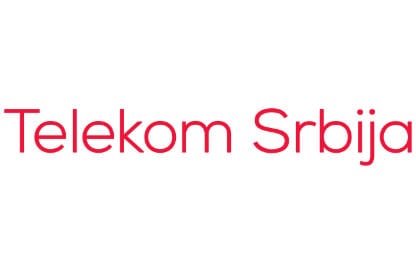 Telekom Srbija
Telekom Srbija
Cloud services business takes off after deploying self-care cloud marketplace

Products and services
Solution group

Outcomes
- Increased the number of active cloud service instances services by 290% in one year
- Reduced time to activate infrastructure-as-a service, from two days to less than 20 minutes
- Delivered software-as-a-service applications within three minutes
- Improved customers’ experiences, by providing them with a self-care portal for modifying, upgrading, and canceling services
Challenge
Create a modern, self-care cloud marketplace, enabling customers to buy and manage cloud services easily and quickly.
Telekom Srbija’s cloud services business was slowed down by a cycle of paper forms and manual processes.
The telco didn’t offer a way for customers to order cloud services online. The only way for customers to order services was to create, sign, and seal paper service request forms. Customers then had to wait lengthy periods while the telco carried out the service request. This cycle repeated every time a customer wanted to modify, upgrade, or cancel a cloud service.
Another challenge was connecting a myriad of back-end IT systems. As a company that had operated for more than 15 years, Telekom Srbija had legacy processes that were not suited to the pace of cloud service delivery. As a result, when a customer ordered a virtual machine, they would sometimes have to wait two days before they could use it.
“It was a tedious system. It could take days if it was a complicated request,” says Saša Đordevic´, Telekom Srbija’s Section Manager for Digital Transformation and CX Design. Telekom Srbija needed a simpler, faster, and more flexible way to deliver cloud services.
Details
Solution
The telco used OpenText (formerly Micro Focus) software to implement a modern, self-care cloud market place. This allowed customers to manage and procure infrastructure-as-a-service (IaaS) and software-as-a-service (Saas) easily and quickly.
Making this possible were core Hybrid Cloud Management (HCM) cloud service automation (CSA) and operations orchestration (OO) capabilities.
The Micro Focus (now OpenText) solution has started new thinking in Telekom Srbija about the speed at which we can offer services.
Telekom Srbija cloud administrators gained the ability to easily model and create cloud services, with access to a rich library of out of-the-box, multi-vendor cloud automation content. This allowed customers to order solutions from the cloud marketplace with one click of a button. Future upgrades to HCM solutions will also enable customers to seamlessly modify and upgrade their services.
Telekom Srbija relied on the built-in orchestrator to integrate a wide variety of processes, from deploying services to recording transactions. It also used the orchestration engine to integrate IT systems. “The brain of everything is orchestration and cloud service automation,” says Saša. Additionally, it used Data Center Automation (DCA) server automation capabilities for the deployment of virtual machines in the cloud.
Results
Telekom Srbija customers can buy and start using cloud services in a fraction of the time it took previously. For example, they can now start using a virtual machine within 20 minutes of purchasing one, instead of waiting two days.
“Orchestration is the greatest thing since the invention of the wheel,” says Saša. “The Micro Focus (now OpenText) solution has started new thinking in Telekom Srbija about the speed at which we can offer cloud solutions.”
Telekom Srbija’s customers can also stop, start, or reconfigure cloud services immediately without involving the telco’s cloud administrators. “Automation and orchestration have completely revolutionized the way we offer solutions to our customers,” says Saša.
The telco will also use HCM capabilities to customize offerings for customers. For example, the company plans on using HCM capabilities to automatically reward certain customers, offer a customized solution catalog, and bundle services.
Telekom Srbija’s cloud business has grown rapidly with the adoption of its self-care marketplace. The number of cloud service instances it activated for customers increased by 290 percent in one year.
Automation and orchestration have completely revolutionized the way we offer services to our customers.
During the same year, the number of Telekom Srbija BizMail webmail services grew by 316 percent. The company has also seen rapid growth in the number of BizWebHosting shared web hosting, BizDisk cloud storage, and IaaS services.
HCM capabilities have reduced the workload of Telekom Srbija’s IT department, because the department no longer needs to manually provision cloud services.
As a result, administrators now have more time to complete IT upgrades and maintenance, and learn new skills. Not only are they working more efficiently, but they have shown that a streamlined, self-care cloud marketplace is vital for a successful cloud business. “[The HCM capabilities] have changed our thinking,” says Saša. “Automation and orchestration is a complete revolution.”
About Telekom Srbija

Telekom Srbija offers fixed, mobile, and broadband telecommunications services and has more than 5 million active mobile customers and 3 million fixed mobile customers in Serbia. Using core Hybrid Cloud Management capabilities, it has expanded its business by offering customers a quick and straightforward way to purchase and manage cloud services. It now offers cloud services in Serbia, Bosnia and Herzegovina, and Montenegro.